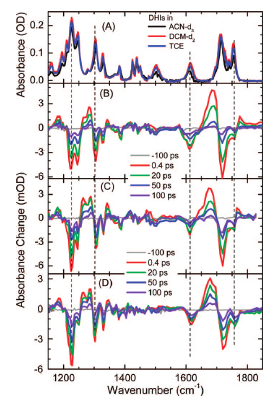-
Ultrafast excited-state dynamics of aminoperylene and of its protonated form observed by femtosecond absorption spectroscopy
O.F. Mohammed and E. Vauthey
Chemical Physics Letters, 487 (4-6) (2010), p246-250


DOI:10.1016/j.cplett.2010.01.066 | unige:6469 | Abstract | Article HTML | Article PDF

The photophysics of aminoperylene (APe) in various solvents, including a room-temperature ionic liquid, has been investigated by steady-state and femtosecond transient absorption spectroscopies. The ultrafast excited-state dynamics originates from the solvation of the polar S1 state and not from a transition from a locally-excited to a charge-transfer state, as found with perylene-dimethylaniline. Addition of acid yields the protonated form APeH+, which exhibits similar photophysical properties than perylene, due to the suppression of the charge-transfer character of the S0–S1 transition. However, excited-state proton transfer, resulting to the formation of APe in the S1 state, is observed in methanol.


